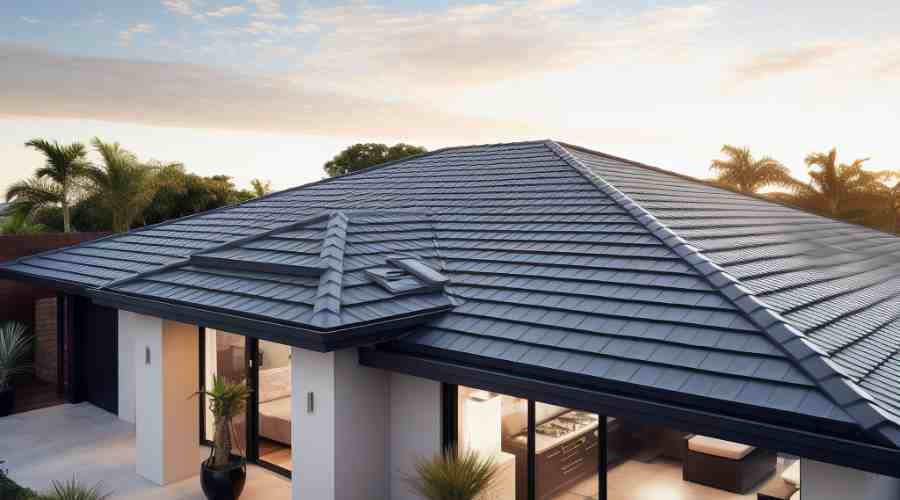DIY Roof Restoration
Breathe New Life into Your Roof with These DIY Restoration Tips
Taking on a DIY roof restoration project can seem daunting. But with proper planning, materials, and techniques, homeowners can breathe new life into an aging roof for a fraction of replacement cost. A restored roof can provide beauty, energy efficiency, and 15-20 more years of leak-free protection when done correctly.
This guide will walk through the key steps for a DIY restoration, inspection, repairs, pressure cleaning, treatment, priming, coating, and maintenance. We’ll also look at common mistakes, tools needed, time requirements, and frequently asked questions when planning your roof overhaul.
The Roof Restoration Process
A proper restoration requires meticulous prep work, quality materials, patience for adequate dry times between steps, and decent weather over 5-7 days. Rushing or cutting corners often leads to premature failure, so understanding each phase will pay off in the long run.
1. Roof Inspection and Assessment
First, check the roof closely from both inside and outside with binoculars if you can. Look for damaged, loose or missing shingles. Check underneath materials for leaks. Note any soggy spots, previous patches, warped wood, worn areas or flashing issues. Take photos of problems found.
Also note the roof’s age, layers, slopes, sun exposure, ventilation, existing coatings and any past fixes done. This helps determine what materials and repairs your project will need for best results long-term.
If you uncover major rot, leaks, overloaded roof trusses or other big structural problems, you likely need a professional’s help or full roof replacement may be required if too far gone.
2. Roof Repairs
Once fully inspected, fix any underlying defects on your list. Replace damaged or missing shingles/tiles, secure loose elements, add new flashing if needed, nail down warped areas, install soaked underlayments, etc. The goal is to address anything compromising roof integrity before restoration materials go on top. Consider hiring a roofer if structural issues surpass DIY skills.
3. Roof Cleaning
Use a pressure washer (1500-4000 PSI) to remove all loose particles, dirt, oily films, chalking, lichens or moss buildup across the entire roof surface and flashings. In some cases, a biodegradable cleaning solution helps cut through stubborn grime – follow label directions closely. Always take safety precautions working on a roof and ladder. Allow it to fully dry for 1-2 days afterward depending on humidity level before the next steps.
4. Preparation and Treatment
Repair any leftover defects after pressure washing reveals additional problems. Scrape off peeling clear coats or paints loosely adhered and feather back edges. Scuff sand glossy areas to degloss for optimal adhesion. Spot prime any exposed roofing paper, felt underlayment or rusted areas with appropriate primer.
Certain roof types may require specialised treatments/primers before protective coating. Do diligent product research for your specific material and situation. For example, apply EPA registered roof fungicides if moss regrowth starts; metal roofs need etching primers. Proper prep work and treatments extend the roof’s service life significantly. Allow recommended drying times between steps.
5. Roof Prime and Seal
The type of primer-sealer depends on your roof material and restoration coating to be used after. For composition shingle, tile, concrete roof, aluminum, galvanised metal, or asbestos cement roofing, high-quality acrylic or epoxy primers work well to seal and chemically bond with topcoats. Some acrylic coatings have self-priming abilities though separate primers remain ideal. For rusty metal sheets, special primers exist as well. Cover all surfaces uniformly after repairs for optimal waterproofing and adhesion.
6. Roof Coating Layer
Once primed, roll on acrylic or silicone coatings made for roofs. Read label fully and follow directions carefully for best results. Apply two or three coats depending on its condition. Allow proper drying time between coats. DIY acrylic paint does not last as long or protect as well as coatings do. Rely on quality coating products lasting 10-15+ years instead when applied right. Use a paint roller in thin sections for full coverage.
7. Additional Protective Steps
Add polyester roof fabric over any cracks first. This helps bridge gaps prone to normal expansion and contraction preventing cracks later.
Consider using coloured ceramic granules around the roof edges. This safeguards vulnerable areas from weathering and hides flaws.
When coating over shingles, focus on flat outward facing exposure areas only. Avoid trying to coat rough shingle undersides and just seal flatter visually exposed sections instead. This saves time and materials.
Common DIY Roof Restoration Mistakes
It pays to learn from the missteps of others when planning your coating work…
- Not scheduling enough time for the project or having ideal climate throughout multiple phases.
- Skipping thorough inspections so underlying issues or water damage get covered up temporarily yet problems persist long-term causing premature failure later.
- Failing to use best materials meant for roof systems instead of basic paints from local hardware stores or big box retailers.
- Not cleaning the entire surface sufficiently or spot-treating any existing mold, rust or ponding areas pre-coating. This jeopardises adhesion.
- Not protecting yourself from fall risks when working off ladders onto a roof or using liquid blasters overhead unsafely. Safety measure should be the top focus.
- Working in non-ideal weather conditions either too hot, humid, cold, windy or rainy flirts with bonding issues, blushing in the finish or needing extensive added dry times between steps.
- Neglecting to do routine restored roof maintenance every few years thereafter allows new problems to emerge requiring additional minor repairs down the road.
Investing a little extra effort in surface preparation, following product specifications, applying coating fundamentals, safely taking your time through the process, and scheduling cooperative temperature makes for a longer-lasting roof restoration job.
Frequently Asked Questions
How long does roof restoration take?
5-7 days for a normal sized home roofing. This allows for drying time between steps.
What are common DIY mistakes?
Not inspecting thoroughly first. Quick or poor cleaning. Using cheap paint not coatings. Applying in bad atmospheric conditions. Not following product instructions.
How do you properly restore a roof?
Inspect closely. After repair problems found. Power wash clean it. Then, let it dry completely. Sand areas as needed. Prime bare areas. Roll on coating products in even layers with proper dry time between.
How many coating layers needed?
Two medium coats minimum. Three coats of colour for worn or porous roofs. Follow product directions. Proper thickness protects longest.
What chemicals clean tile roofs?
A degreaser or multi-surface cleaner using medium force works for light dirt. For heavier gunk, use a roof tile cleaner diluted as label directs before rinsing thoroughly.
Can I paint my roof myself?
Yes, you can paint it but coatings last much longer. Use exterior acrylic paints if wanting a short-term fix mainly for appearance. For best protection over many years, apply special roof coatings instead after good prep work first. Follow all label directions.
Conclusion
Restoring your roof yourself can save thousands of dollars compared to full replacement. But it requires learning proper techniques and using coatings for long-lasting results.
First inspect closely then fix leaks and signs of damage. Clean thoroughly with a power washer before priming bare areas. Roll on special roof paint in multiple coats according to label directions. Allow plenty of drying time between steps. Work carefully on ladders and lift roofing materials safely.
If the project seems too complicated, hire a professional roofing contractor instead. Their warranties and safety equipment protect against leaks.
With some effort and the right materials, you can make your worn roof look and perform like new again at a fraction of replacement cost. Just take it slow and steady. Personal safety first!
Pro Tip: Got an aging roof that needs some expert care? Don’t replace it yet – call a professional roofing company instead. An experienced roofing expert can revive an old roof for much less money. They fully inspect the type of roof first to spot issues needing fixing. Then they properly power wash it and apply special coatings to make it watertight again. The right professional roof restoration service knows the products and process to make it last years longer. And they do it safely. Working on roofs can be risky without the right gear and know-how. Leave it to the pros for long-lasting results and peace of mind.



